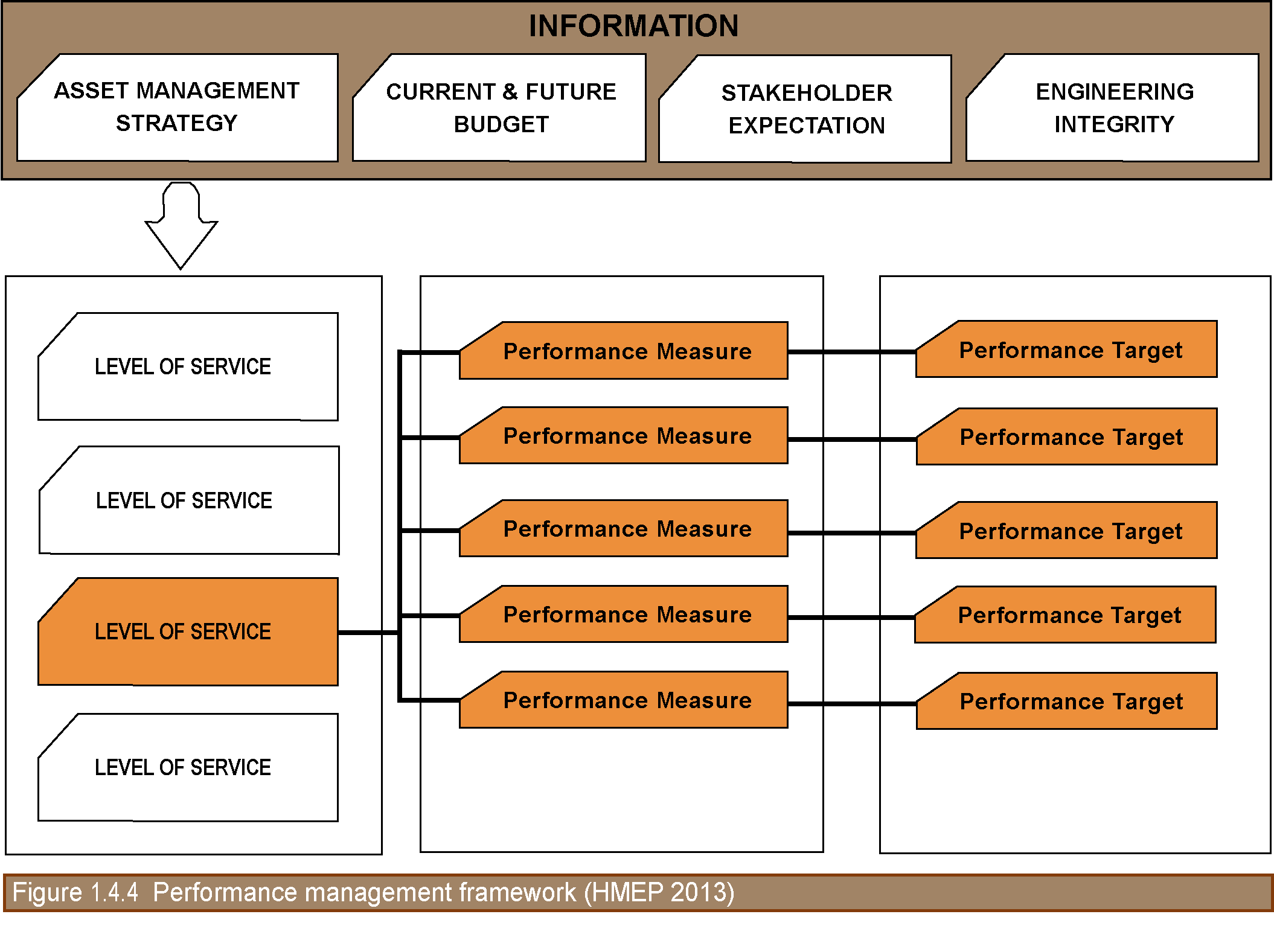
Asset Management Manual
A guide for practitioners!

Asset Management Manual
A guide for practitioners!
Setting a framework for performance management involves expressing the long term corporate goals and objectives of the road organization in terms of the desired levels of service, and linking these with performance measures and targets that allow the organization to monitor progress in achieving the intended results (PIARC 2004). Therefore, the main components of a performance management framework are: levels of service, performance measures and performance targets (see figure 1.4.4).

As shown in Figure 1.4.4, a number of measures can be chosen to describe the overall performance associated with each level of service.
In developing a performance framework, it is important to understand who is affected by highway asset performances; within this broad group of people, three broad categories may be identified:
The data collection and processing activities, dealt with in section 2.1, must be guided by a coherent strategic vision that specifies what goals and objectives are to be served and what measures will quantify the objectives, as defined by the performance management framework.
The methodology used to collect data, calculate performance measures and establish targets, and define the associated levels of service should be fully documented for future reference. Furthermore, authorities/agencies may develop an approach for communicating levels of service and measures to external and internal stakeholders.